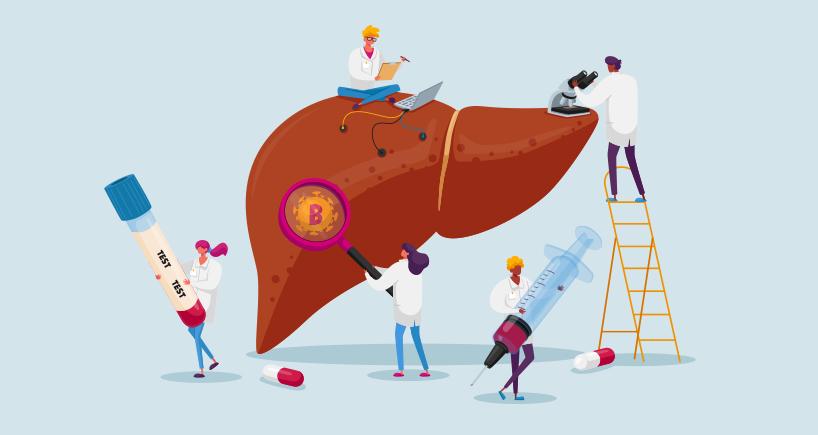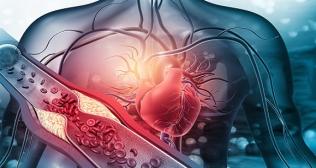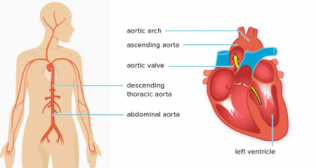
FibroScan test:An innovative breakthrough in diagnosing liver diseases!
Epidemiology of liver diseases in India
Liver diseases are increasingly becoming a public health concern in India. As per recent studies, the most common etiology of liver cirrhosis in the country is alcohol consumption, accounting for 43.2% of cases. This is followed by non-alcoholic fatty liver disease (NAFLD), hepatitis B virus (HBV) and hepatitis C virus, accounting for 14.4%, 11.5% and 6.2% of cases, respectively. The main symptoms of cirrhosis include tiredness, skin itching, poor appetite, unpredicted weight loss, nausea and vomiting, muscle cramps and mild pain in the upper right abdomen.
Among the causes of liver diseases, NAFLD is becoming increasingly prevalent. Those with this condition present with symptoms like abdominal pain and extreme weakness. While there’s no cure for the condition, certain medications can help manage it to a certain extent.
Early diagnosis can play a crucial role in treating and managing chronic liver diseases. An effective diagnostic tool for this purpose is the FibroScan, which is capable of diagnosing liver fibrosis in its earliest stages along with assessing its severity. The technique provides rapid insights into the amount of fat stored within the liver, which allows healthcare professionals to come up with an appropriate treatment plan.
What is FibroScan?
FibroScan, also referred to as transient elastography, is a novel, non-invasive, rapid, and reproducible technique that can measure liver stiffness.
The physician may recommend this test to monitor disease progression in those suffering from the following chronic liver conditions:
Hepatitis B
Hepatitis C
Alcoholic liver disease
NAFLD
Liver cirrhosis
Genetic diseases like hemochromatosis
Autoimmune liver disease
In addition, it’s also used to monitor the liver health of those who take medications that can potentially cause liver damage.
How does FibroScan work?
The FibroScan device works on the principle of estimating the shear wave velocity. In this method, ultrasound waves (of 50 MHz) are emitted from a probe that passes through the liver tissue. A transducer present at the end of the probe measures the speed of the shear waves (in meters per second). This is then interpreted into a result (represented in kilopascals), which provides the extent of liver stiffness. The entire process is often known as liver ultrasonographic elastography.
What are the limitations of conventional liver biopsy?
Liver biopsy has long been the gold standardfor diagnosingfibrosis. It has also been utilized to examine patients with viral hepatitis, measure disease severity and determine whether treatment should be pursued. However, it has certain pitfalls. A biopsy is an invasive test that requires the patient to be hospitalized for half a day; it is also expensive and linked with certain risks such as pain and bleeding. Another drawback of liver biopsy is that different pathologists can interpret the same sample in different manners, which can cause discrepancies in disease staging.
InterpretingFibroScan results
The fibrosis score provides an assessment of liver scarring, which may be caused by diseases such as cirrhosis. This scoring system helps estimate the level of scarring -- whether it’s mild, moderate, or severe. The higher the level of scarring, the greater the likelihood of liver failure.
The table below represents typical FibroScan results, categorizing different levels of scarring for common causes of liver diseases and liver stiffness result which is estimated in kilopascals (kPa):
Conditions | F0 to F1 (little or no scarring) | F2 (moderate scarring) | F3 (severe scarring) | F4 (late-stage scarring) |
Hepatitis B | 2 to 7 kPa | 8 to 9 kPa | 8 to 11 kPa | 18 kPa or higher |
Hepatitis C | 7.5 to 10 kPa | 8 to 9 kPa | 9 to 14 kPa | 14 kPa or higher |
Nonalcoholic Fatty Liver Disease | 7.5 to 10 kPa | 7.5 to 10 kPa | 10 to 14 kPa | 14 kPa or higher |
Alcohol-related disease | 7.5 to 10 kPa | 7 to 11 kPa | 11 to 19 kPa | 19 kPa or higher |
Conclusion
With liver diseases becoming a public health concern with each passing day, early diagnosis is of utmost importance to prevent severe consequences. Many liver diseases usually remain undiagnosed during the early stages, as they have few manifestations. To address this, a novel, non-invasive diagnostic tool called FibroScan has been developed that can diagnose liver fibrosis in its earliest stages as well as assess its severity. It provides an assessment of fat stored within the liver, allowing healthcare professionals to come up with an appropriate treatment plan. Further research to develop other such novel diagnostic techniques can improve the health outcomes of individuals, ensuring a better quality of life.



















